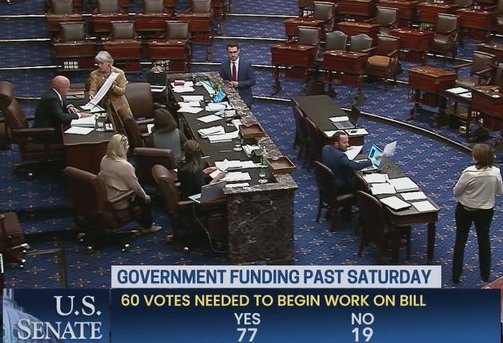The Senate voted Tuesday evening to forward a bipartisan stopgap spending measure that would keep the government funded at current levels until November 17.
The 77-19 vote in the Democratic-led upper chamber came as Congress has until Saturday at midnight to agree on a federal budget or force a government shutdown.
Having overcome the first hurdle, the stopgap measure still needs to clear a final vote in the Senate. If adopted, it would fund the government for six weeks with additional funding for for Ukraine and domestic disaster relief.
The short-term deal, called a continuing resolution (CR), would allocate $4.49 billion for the Defense Department’s effort in Ukraine, alongside $1.65 billion in additional aid for the country amid its 19-month-long war with Russia. However, it’s far less than the White House’s request for $20.6 billion in additional Ukraine funding.
Further, the short-term stopgap faces an uncertain fate in the Republican-led House, where Representatives are focused on long-term spending initiatives, and House Speaker Kevin McCarthy (R-CA) has asserted that funding for Ukraine should be dealt with in a supplemental request and not added to a stopgap bill.
Though the lower chamber has been bogged down by GOP infighting, on Tuesday the House did vote along partisan lines to approve a rule that will allow consideration of four fiscal year 2024 appropriations bills for Defense, Agriculture, State-Foreign Operations and Homeland Security.
Rep. Marjorie Taylor Greene (R-GA) was the only Republican to vote against the House measure.


